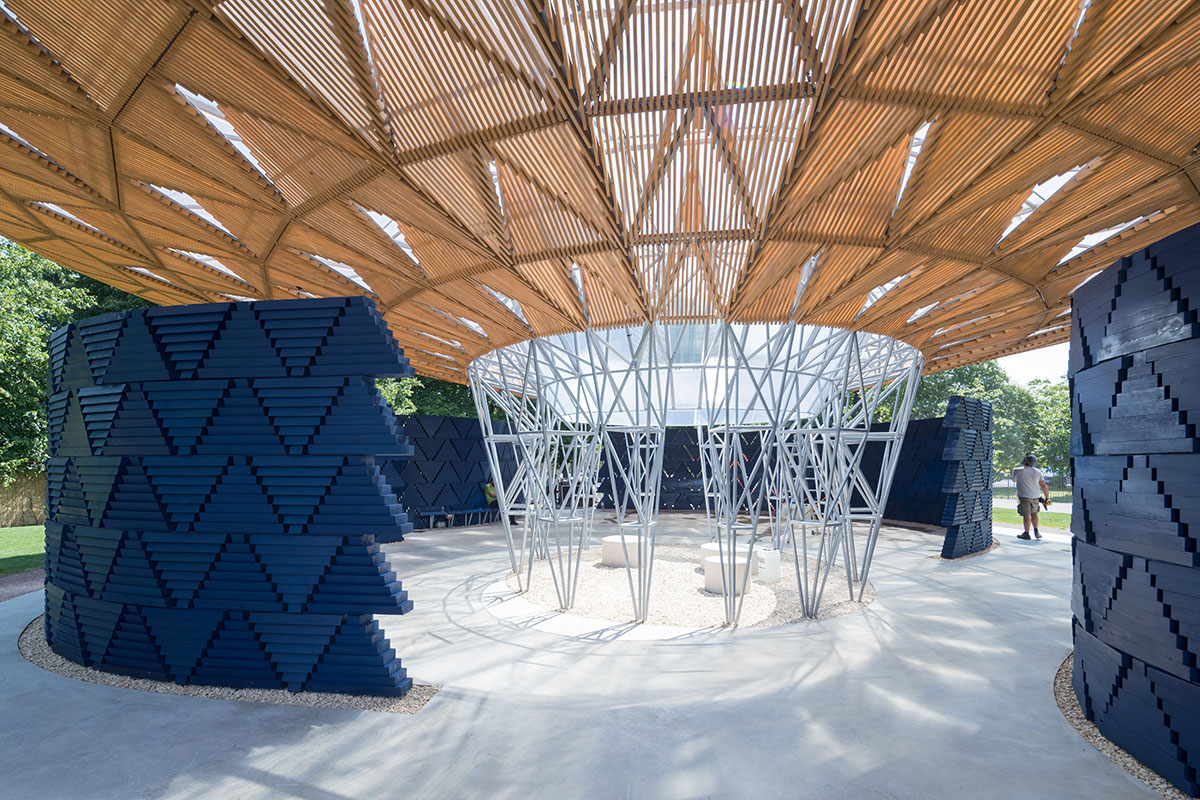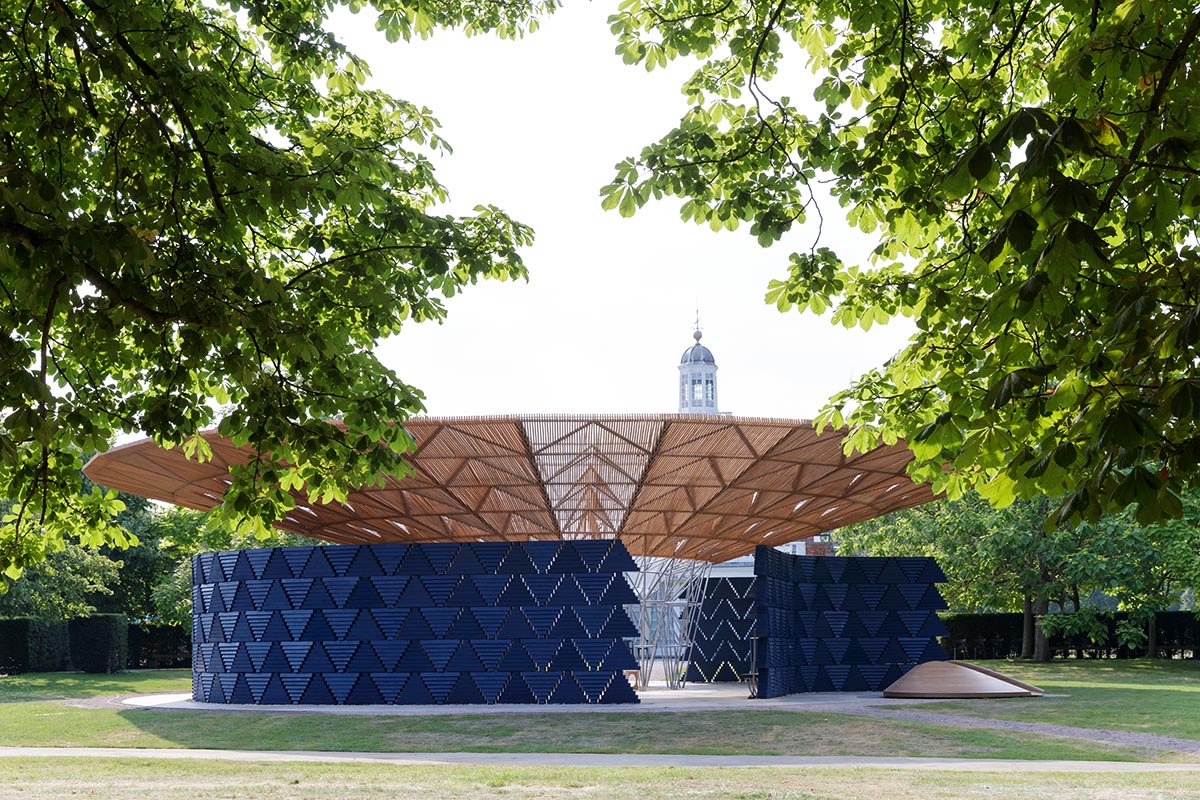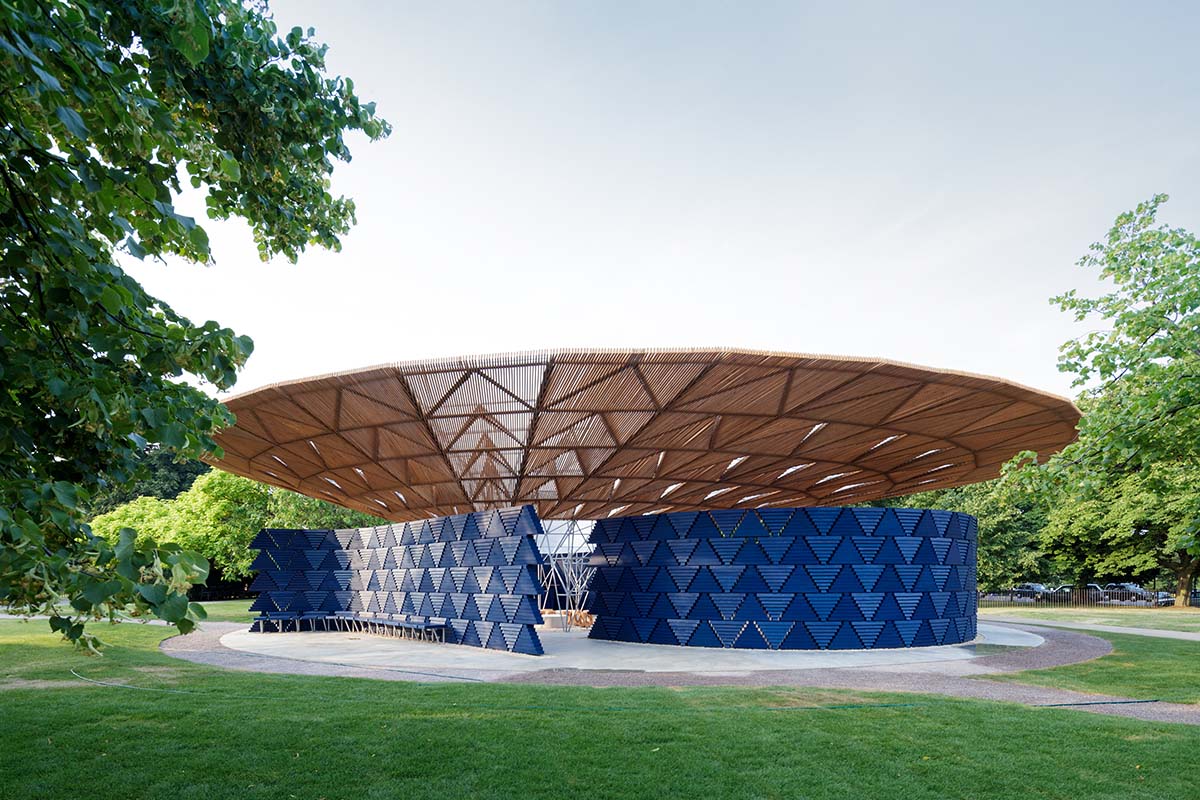Submitted by WA Contents
Francis Kéré’s tree-inspired Serpentine Pavilion opened in London’s Kensington Gardens
United Kingdom Architecture News - Jun 27, 2017 - 14:27 15927 views

Burkinese architect Diébédo Francis Kéré's Serpentine Pavilion for 2017 has been opened to the public in London's Kensington Gardens - this year's pavilion features a rounded space positioned around a small-central courtyard and the structure is surrounded by indigo-blue walls, made of a series of triangular modules. Socially minded architect Diébédo Francis Kéré is the seventeenth but the first African architect being selected to design the annual Serpentine gallery pavilion. Kéré, who leads the Berlin-based practice Kéré Architecture, was selected by Serpentine Artistic Director Hans Ulrich Obrist and CEO Yana Peel with advisors David Adjaye and Richard Rogers.
Since its launch in 2000, the Serpentine Pavilion has become one of the most anticipated events in the global cultural calendar and a leading visitor attraction during London's summer season of culture. The Serpentine Pavilion will be on view between June 23 and October 8, 2017 in London's Kensington Gardens.
Video by Serpentine Galleries

Francis Kéré designed a circular pavilion inspired by a tree that serves as a central meeting point for life in Gando - the Pavilion seeks to connect its visitors to nature and to each other. The Serpentine Pavilion has an expansive roof, supported by a central steel framework, mimics a tree's canopy, allowing air to circulate freely while offering shelter against London rain and summer heat.
Kéré embraced the British climate in his design, creating a structure that engages with the ever-changing London weather in creative ways. The Pavilion has four separate entry points with an open-air courtyard in the centre, where visitors can sit and relax during sunny days. In the case of rain, an oculus funnels water that collects on the roof into a spectacular waterfall effect, before it is evacuated through a drainage system in the floor for later use in irrigating the nearby parkland.

"As an architect, it is an honour to work in such a grand park, especially knowing the long history of how the gardens evolved and changed into we see today," said Diébédo Francis Kéré.
"Every path and tree, and even The Serpentine lake, were all carefully designed. I am fascinated by how this artificial landscape offered a new way for people in the city to experience nature."
"In Burkina Faso, I am accustomed to being confronted with climate and natural landscape as a harsh reality. For this reason, I was interested in how my contribution to this Royal Park could not only enhance the visitor's experience of nature, but also provoke a new way for people to connect with each other."
For the Pavilion, both the roof and walls are made from wood. By day, they act as shading, creating pools of dappled shadows. By night, the walls become a source of illumination as small perforations twinkle with the movement and activity from inside.

"Francis Kéré's Pavilion highlights the power of simplicity by reducing architecture to its core elements, modelled in harmony with the natural context of Kensington Gardens. This Pavilion will be a space of conversation, collaboration and exchange. We share Kéré's belief that architecture, at its best, can enhance our collective creativity and sense of community, and push people to take the future into their own hands," said Serpentine Galleries CEO, Yana Peel and Artistic Director, Hans Ulrich Obrist.
"The proposed design for the 2017 Serpentine Pavilion is conceived as a 'microcosmos' - a community structure within Kensington Gardens that fuses cultural references of my home country, Burkina Faso, with experimental construction techniques," emphasised Francis Kéré.
"My experience of growing up in a remote desert village has instilled a strong awareness of the social, sustainable and cultural implications of design. I believe that architecture has the power to surprise, unite and inspire, all while mediating important aspects such as community, ecology and economy."
Last year, Bjarke Ingels Group (BIG) designed an 'unzipped wall' structure for the Serpentine Pavilion and it was visited by more than 250,000 people. BIG's structure was one of the most-visited Pavilions to date, stated by the Serpentine Pavilion.
All images © Iwan Baan
> via The Serpentine Galleries